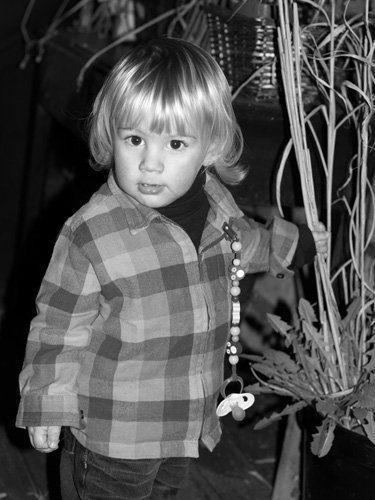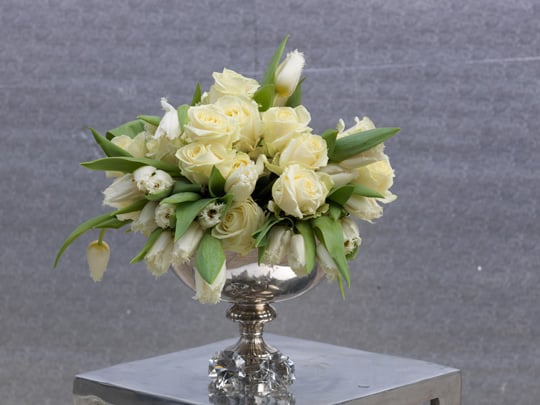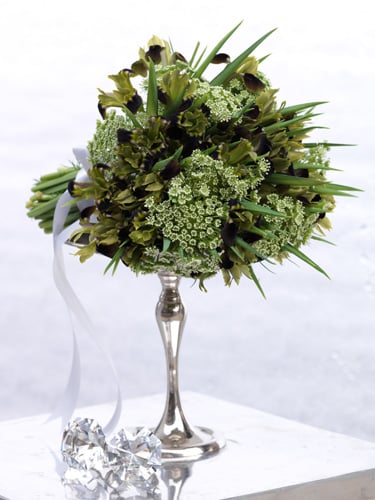Original URL: https://www.theregister.com/2011/04/08/review_camera_hasselblad_h4d_40_stainless_steel/
Hasselblad H4D-40 Stainless Steel 40Mp camera
Shiny special edition for the pros
Posted in Personal Tech, 8th April 2011 13:08 GMT
Review When Hasselblad launched its 40Mp H4D model at Photokina, it was presented stripped of any coating, with just the bare bones of a stainless steel body on show. The idea was to illustrate the core strength of the HD4 series, but this denuded look was so striking – contemporary, yet oddly retro – that the Swedish company immediately started to receive requests from photographers wanting one.
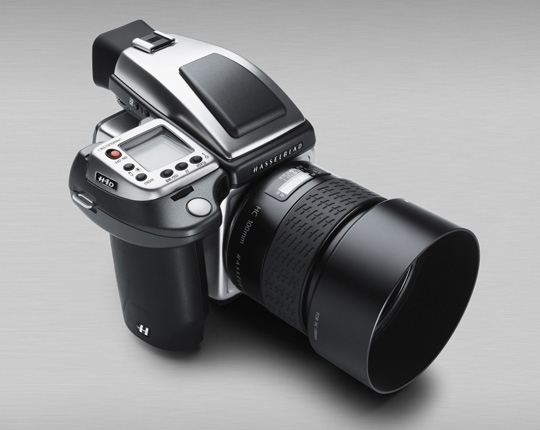
One hundred of a kind: Hasselblad's H4D-40 Stainless Steel
Hasselblad seized the opportunity and in November announced it would produce a limited run of 100 Stainless Steel H4D-40 cameras. For a collectors' item, the price tag of £16,794 with the 80mm lens or £15,594 body-only isn't an excessive mark-up on the standard model. You can still buy one too, apparently, and recently had the chance to try one of these rarities out. If nothing else, its cool metal exterior emphasises just how hardy it is. And if you leave practicalities aside, its alluring aesthetics and uniqueness combine to make just taking it out of the box a rather special user experience. And that’s all before you even get to take a picture.
By contrast, the standard edition H4D-40 is available at £14,634 body-only or £15,834 with the standard HC 80mm lens. This has a vaguely institutional paint job, reminiscent of scientific instruments and wartime memorabilia. Apart from appearances, these models are the same, but if you need to be noticed – as if owning a Hasselblad wasn’t enough – the company also makes a Ferrari H4D-40, with a shiny and bold red body with the iconic rampant horse logo. No doubt Stainless Steel owners will look upon the Ferrari edition as a little common, with its production of 499 units even if it does cost a good deal more at £22,800 including 80mm lens.
Even in the digital domain Hasselblad maintains its modular approach to camera construction that has made its film models, such as the V-series, so enduring. Part of the H-system of cameras, the H4D-40 is a step up from the entry-level H4D-31. The body is essentially a cube with a slightly protruding detachable digital back with a 3in, 230,400 pixels resolution, display, optics at the front and viewfinder options on top. You can even kit out the H-series for film using the HM 16-32 magazine that takes 120/220 roll film or the HMi 100 for instant film.
The H4D-40 is built around a 40Mp Kodak 33 x 44mm CCD sensor, with 1.3x crop factor. Capture rate is 1.1secs per frame and produces 3FR RAW files, Hasselblad’s own lossless compression format. Handling these files is Phocus, Hasselblad’s imaging software. A powerful and constantly updated workflow processing application, Phocus also has a sister app, Phocus mobile, that runs on iOS devices and allows wireless connection to the main software for browsing, zooming, rating and remote capture.
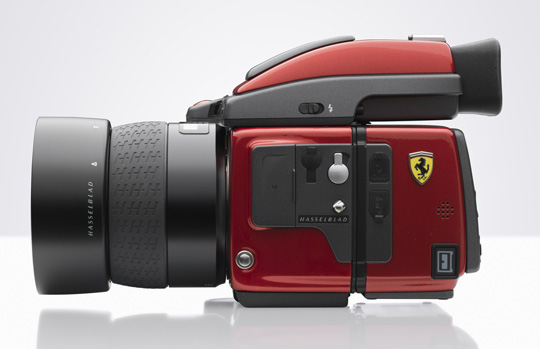
If you like special editions, then the Ferrari H4D-40 even comes in a special box
With a standard HC80 mm lens attached the H4D-40 measures 153 x 131 x 213 mm (WxHxD) and weighs 2290 g (including battery and card). It is a big and heavy affair but thanks to a large, rubberised grip, housing the battery pack, and ergonomically designed, well-placed controls the H4D-40 feels extremely comfortable in the hand and it is a piece of cake to operate.
Test tones
Compared to any DSLR the H4D-40 has a streamlined and beautifully simple layout. Most controls, Flash, White Balance/ISO, AF, Menu, Display Backlight and On/Off button, are positioned around the info display on the right top plate and can easily be accessed. A bit more difficult to reach is the mirror lock-up button and the stop-down button positioned inside the front recess of the handgrip. The provided control buttons call-up the available options for each setting that can then be selected through either one of the camera’s two control wheels, and then stored by pressing a Save button.
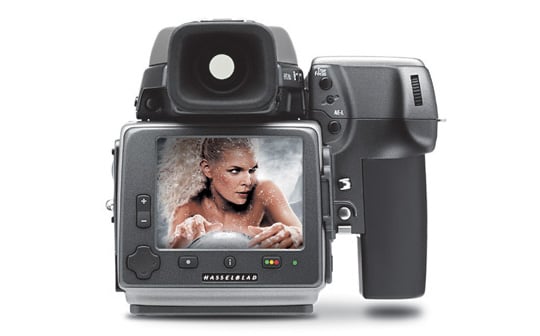
Only a 3in display on the back
The H4D-40 provides an articulate and extensive level of customisation where – apart from being able to reassign functions to buttons and wheels – the user can also create and name specific profiles, whole set-ups for each scene or shooting mode, that can then be easily recalled through the on/off button. In addition, the camera also features Audio Exposure Feedback technology that which is an impressive title, but simply makes warning sounds to alert the user to over/under exposure, low battery levels or card space running out.
The menu is also very simplified compared to most DSLRs. Being a single-shot camera and generating only RAW files the H4D-40 can do away with a lot of JPEG menu options like file size, sharpness etc. Despite this I found the menu not exactly as straightforward to navigate as I initially thought and had to resort to the manual a few times, which is not something I have to do too often with the cameras I test.
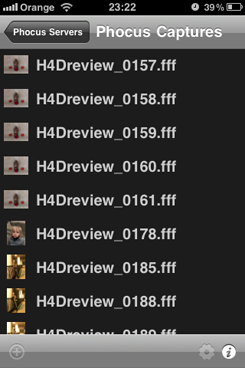
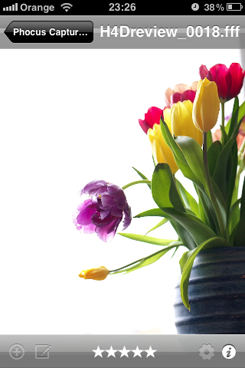
Phocus mobile captures and preview
The H4D-40 can be tethered to a computer using FireWire 800 for studio shooting or you can simply rely upon the LCD screen on the back. While the display might be better than other MF digital backs it bears no comparison with the high-resolution screens found on most full-frame (35mm) DSLRs. When shooting on location in un-tethered mode this can be a bit of a problem, since checking for accurate focus directly on the screen is not a reliable option even though there is an image zoom function. I was also disappointed to find that tonally, the colour reproduction on the screen was not exactly faithful.
The viewfinder, however, is superb, much larger than any 35mm can ever be and beautifully bright. I have used the standard pentaprism HVD90x but being a modular system, this can be replaced by the HVM waist-level option if preferred. The eye rubber piece is luxuriously soft and wraps around your eye snugly keeping any external light from filtering in, but it is very delicate: I split the rubber on the one I was issued after only a couple of days.
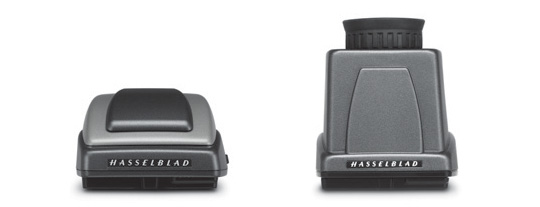
Viewfinders: the 90° HV90x on the left features a pop-up flash
Somewhat surprisingly, the HVD90x and HV90x viewfinders feature a pop up flash unit that, while not being great as main lighting source, works quite well as a fill-in light. More importantly though, the leaf shutter integral in each H lens enables the H4D-40 to sync external flash units at all shutter speeds (256sec. to 1/800th sec) with obvious creative advantages over 35mm DSLRs.
All mod cons
The modularity of medium format systems has always been a sticky issue, as the integration between camera body and the sensor in the digital back was always less than perfect, and certainly no match for the flawless integral whole of a one-body DSLR. In the case of the H4D though, the integration is so fine-tuned that the system works as smoothly as the best DSLR, letting you control settings like ISO or White Balance directly from the camera body and showing information and histograms on the body display as well as on the main LCD.
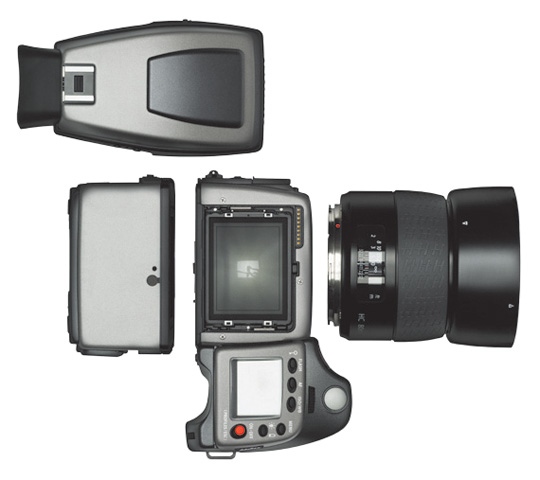
The H-series is modular system with easily interchangeable accessories
This level of integration is a hugely important step forward in the medium format world especially when classic modular MF models are challenged by one-body MF cameras such as the Leica S2 or the Pentax 645D, which use the same or similar sensors without facing the challenges of modular calibration.
Unification comes at a price though. Since 2008 Hasselblad has used a proprietary system, so its backs cannot be used on any other manufacturer’s body nor can any back other than Hasselblad’s be mounted on its camera bodies. Hence anyone considering buying into the H4D system will not be able to combine it with any other medium format body or digital back they might already own.
To compensate for the lack of 35mm-style multi-point Autofocus system – something that has always been a bit of an issue with medium format cameras relying on one centred AF point – Hasselblad has come up True Focus, a feature on all H-series models.
True Focus is a gamechanging technology, as it allows to lock focus on the desired area of the subject, like the eyes for example, when reframing for composition. True Focus relies on the camera’s Absolute Position Lock (APL) processor that, once focus is first established, is able to log the camera movements during reframing and communicate these changes to the lens’s focus motor for the necessary adjustments.
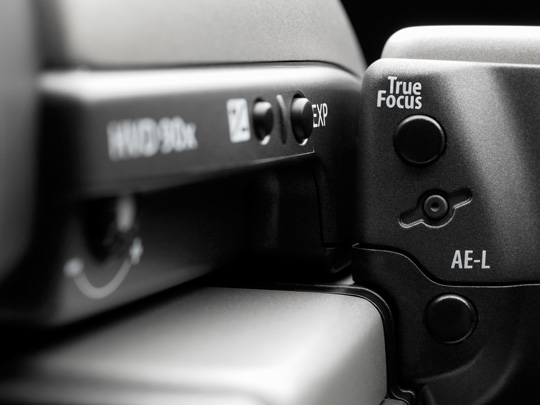
The jewel in the crown: True Focus
The system is extremely accurate even when the focused subject is pushed to the corner of the frame but will not work at all if the subject and/or the camera move significantly from the original position. In bright daylight the Autofocus system is fast enough, but in reduced lighting conditions it begins to struggle, which can be an issue for location work. The impressive thing is, that despite all the additional work True Focus has to do, I couldn’t detect any actual delay when focusing on stationary subjects.
Sample Shots
Standard HC 80mm f2.8 lens

When zoomed in there's an extraordinary level of detail – check out the beak
Click for a full-resolution image (8.6MB)
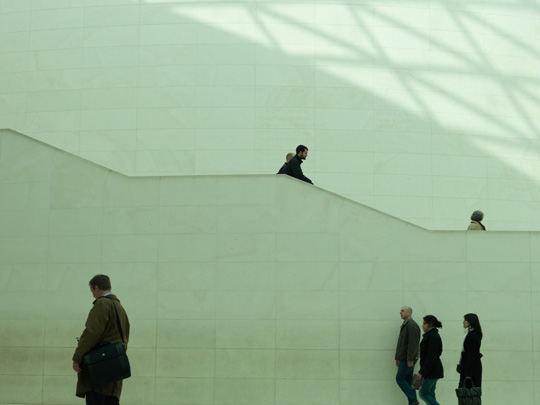
White balance isn't always perfect as the white interior of this building highlights
Click for a full-resolution crop
Sample Shots
HC 150mm f3.2 lens

Dust is always an issue when changing lenses in the field – Phocus could easily fix the spec in the left eye
Click for a full-resolution crop
HCD 28mm f4 lens
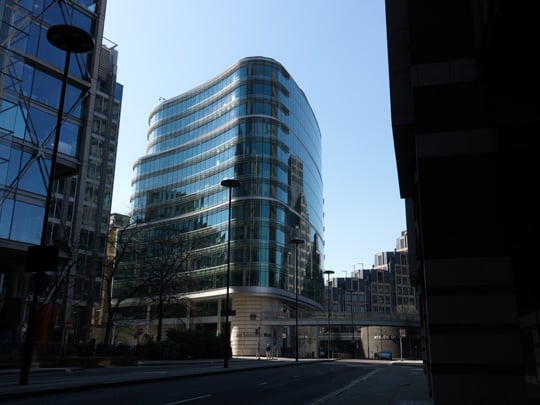
Wide angle shooting produces converging verticals
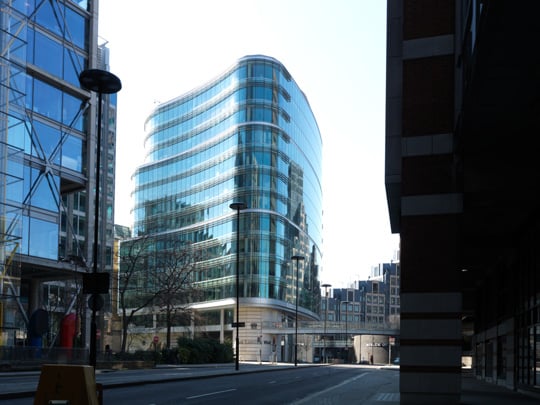
Using the HTS 1.5 Tilt and Shift adapter makes corrections
ISO Tests
Optical profusion
Currently, Hasselblad has 11 focal lengths in the H series and they are all beautifully built, precision optics. During tests I used the standard HC 80mm f2.8, a wide-angle HCD 28mm f4, and a portrait HC 150mm f3.2. Compared to 35mm or Leica S lenses Hasselblad’s optics are massive and heavy but they are incredibly sharp and have very little distortion.
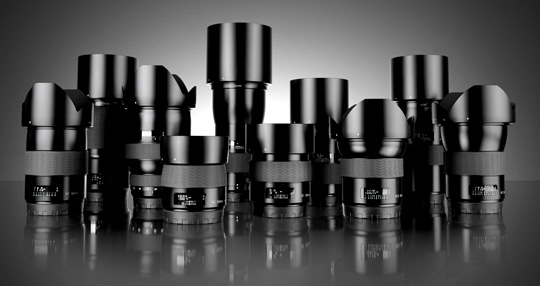
Lens line-up
Even the 28mm, currently the widest lens available for medium format, displayed virtually no loss of sharpness in the corners. The standard 80mm also performed very well with great colour reproduction and consistent output. The 150mm lens was easy to handle, with a moderate telephoto effect that is perfect for portraits. I was also given an HTS 1.5 Tilt and Shift Adapter to play with. This clever little tool is Hasselblad's attempt to steer photographers away from the need to use large format cameras and towards an all-encompassing system.
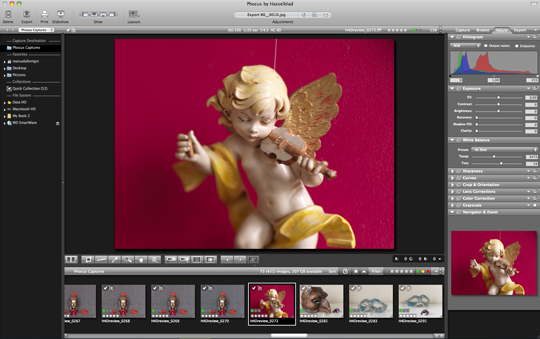
Phocus software features lens corrections and professional retouching
I’m still partial to Leica lenses over Hasselblad ones but when I compared the final images produced with the Leica S2 and the H4D-40, the latter had the most calibrated and detailed results. This is almost certainly due to the images being processed through Phocus, which contains the exact parameters of each individual lens and can apply to automatically apply correction of chromatic aberrations, distortion and vignetting. This level of enhancement goes beyond what Adobe's Lightroom or any other non-proprietary software can do. The final processed files are razor-sharp, have rich colour and tonal gradation and a complete lack of optical flaws.
ISO performance is in line with what I expected from a classic medium format system but still not near as good as the Leica S2 or the Pentax D645, which actually uses exactly the same Kodak sensor. Phocus controls, but cannot remove the noise present at 800 ISO and above.
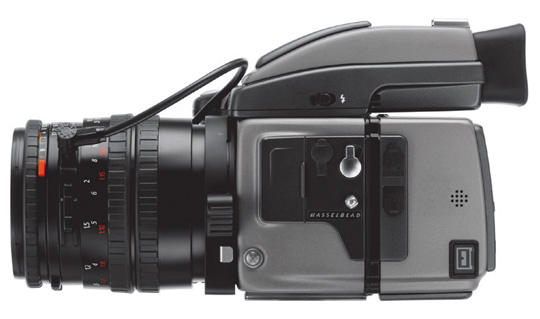
The CF lens adapter enables the use of V-series optics
I was quite pleased to find instead that the H4D-40 carried off handheld shooting in available light quite well despite not being engineered for that. The sheer weight of the camera together with the well balanced and ergonomically designed body helped steady my hand producing acceptable, if occasionally blurred results. White Balance was not always spot on though. For example, the creamy white walls inside the British Museum had an obvious blue/green cast in my H4D-40 shots, which I never had when I photographed it before with my Nikon. This can, of course, be very easily corrected in Phocus.
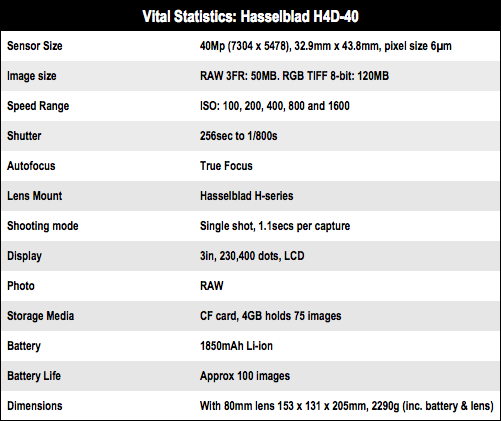
Field labour
For most other field applications, the H4D-40 is still no replacement for the fast response and portability of a full-frame DSLR, especially considering the ever-increasing resolution and pixel performance of leading models, or the alternatives of the Leica S2 or Pentax D654.
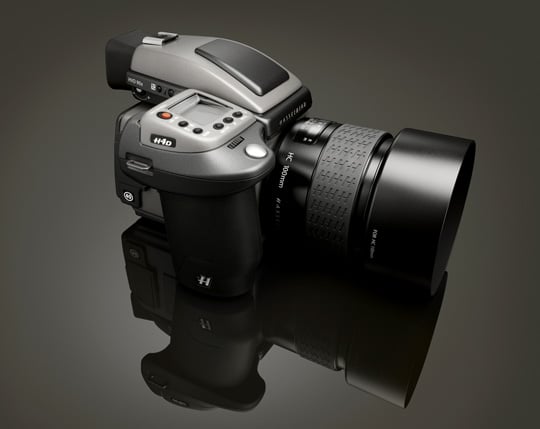
If the Stainless Steel models are sold out, the standard H4D-40 will still be good for your image
Indeed, there’s no escaping the weight and bulk of this camera which makes it difficult to carry around on assignment. Also, the issues with the display, the high ISO noise performance and autofocus behaviour in low light, add to the challenge. Battery life is a real issue too. Certainly, I expected such a powerful camera to be power hungry but I didn’t expect the rechargeable Li-ion battery to last less than 100 shots. For any serious shooting, carrying spares is a must.
Verdict
These factors highlight how the H4D-40 is more attuned to the needs of commercial photographers shooting in controlled location environment. With this in mind, if you are a professional in the market for an outstanding and affordable MF system that is flexible enough to take on location, then this is definitely the camera for you and a commendable engineering effort from Hasselblad.
Overall, the H4D-40 – together with the release of the cheaper H4D-31 – brings a lot of improvements over competing MF models and represents Hasselblad’s first serious step towards a more unified, 35mm-style, medium format DSLR. ®
Catherine Monfils is a professional photographer specialising in portraiture, lifestyle and fashion.
Thanks to Pro Centre for the loan of the review sample.
More Camera Reviews… |
|||||
 Canon Canon
EOS 60D |
 Pentax Pentax
645D |
 Leica Leica
S2 |
 Nikon Nikon
D3s |
 Hasselblad Hasselblad
CFV-39 |
|
